Chrysler 2012 Annual Report Download - page 85
Download and view the complete annual report
Please find page 85 of the 2012 Chrysler annual report below. You can navigate through the pages in the report by either clicking on the pages listed below, or by using the keyword search tool below to find specific information within the annual report.-
 1
1 -
 2
2 -
 3
3 -
 4
4 -
 5
5 -
 6
6 -
 7
7 -
 8
8 -
 9
9 -
 10
10 -
 11
11 -
 12
12 -
 13
13 -
 14
14 -
 15
15 -
 16
16 -
 17
17 -
 18
18 -
 19
19 -
 20
20 -
 21
21 -
 22
22 -
 23
23 -
 24
24 -
 25
25 -
 26
26 -
 27
27 -
 28
28 -
 29
29 -
 30
30 -
 31
31 -
 32
32 -
 33
33 -
 34
34 -
 35
35 -
 36
36 -
 37
37 -
 38
38 -
 39
39 -
 40
40 -
 41
41 -
 42
42 -
 43
43 -
 44
44 -
 45
45 -
 46
46 -
 47
47 -
 48
48 -
 49
49 -
 50
50 -
 51
51 -
 52
52 -
 53
53 -
 54
54 -
 55
55 -
 56
56 -
 57
57 -
 58
58 -
 59
59 -
 60
60 -
 61
61 -
 62
62 -
 63
63 -
 64
64 -
 65
65 -
 66
66 -
 67
67 -
 68
68 -
 69
69 -
 70
70 -
 71
71 -
 72
72 -
 73
73 -
 74
74 -
 75
75 -
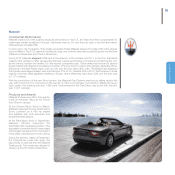 76
76 -
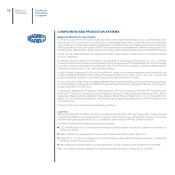 77
77 -
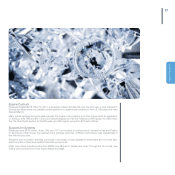 78
78 -
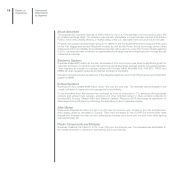 79
79 -
 80
80 -
 81
81 -
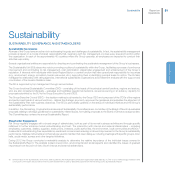 82
82 -
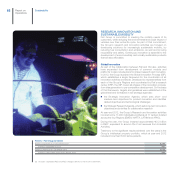 83
83 -
 84
84 -
 85
85 -
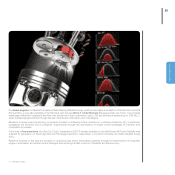 86
86 -
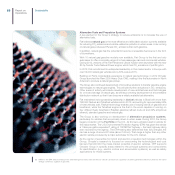 87
87 -
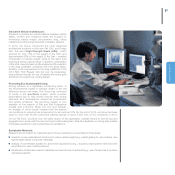 88
88 -
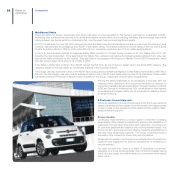 89
89 -
 90
90 -
 91
91 -
 92
92 -
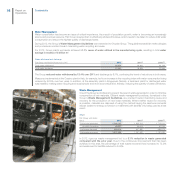 93
93 -
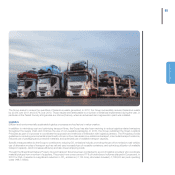 94
94 -
 95
95 -
 96
96 -
 97
97 -
 98
98 -
 99
99 -
 100
100 -
 101
101 -
 102
102 -
 103
103 -
 104
104 -
 105
105 -
 106
106 -
 107
107 -
 108
108 -
 109
109 -
 110
110 -
 111
111 -
 112
112 -
 113
113 -
 114
114 -
 115
115 -
 116
116 -
 117
117 -
 118
118 -
 119
119 -
 120
120 -
 121
121 -
 122
122 -
 123
123 -
 124
124 -
 125
125 -
 126
126 -
 127
127 -
 128
128 -
 129
129 -
 130
130 -
 131
131 -
 132
132 -
 133
133 -
 134
134 -
 135
135 -
 136
136 -
 137
137 -
 138
138 -
 139
139 -
 140
140 -
 141
141 -
 142
142 -
 143
143 -
 144
144 -
 145
145 -
 146
146 -
 147
147 -
 148
148 -
 149
149 -
 150
150 -
 151
151 -
 152
152 -
 153
153 -
 154
154 -
 155
155 -
 156
156 -
 157
157 -
 158
158 -
 159
159 -
 160
160 -
 161
161 -
 162
162 -
 163
163 -
 164
164 -
 165
165 -
 166
166 -
 167
167 -
 168
168 -
 169
169 -
 170
170 -
 171
171 -
 172
172 -
 173
173 -
 174
174 -
 175
175 -
 176
176 -
 177
177 -
 178
178 -
 179
179 -
 180
180 -
 181
181 -
 182
182 -
 183
183 -
 184
184 -
 185
185 -
 186
186 -
 187
187 -
 188
188 -
 189
189 -
 190
190 -
 191
191 -
 192
192 -
 193
193 -
 194
194 -
 195
195 -
 196
196 -
 197
197 -
 198
198 -
 199
199 -
 200
200 -
 201
201 -
 202
202 -
 203
203 -
 204
204 -
 205
205 -
 206
206 -
 207
207 -
 208
208 -
 209
209 -
 210
210 -
 211
211 -
 212
212 -
 213
213 -
 214
214 -
 215
215 -
 216
216 -
 217
217 -
 218
218 -
 219
219 -
 220
220 -
 221
221 -
 222
222 -
 223
223 -
 224
224 -
 225
225 -
 226
226 -
 227
227 -
 228
228 -
 229
229 -
 230
230 -
 231
231 -
 232
232 -
 233
233 -
 234
234 -
 235
235 -
 236
236 -
 237
237 -
 238
238 -
 239
239 -
 240
240 -
 241
241 -
 242
242 -
 243
243 -
 244
244 -
 245
245 -
 246
246 -
 247
247 -
 248
248 -
 249
249 -
 250
250 -
 251
251 -
 252
252 -
 253
253 -
 254
254 -
 255
255 -
 256
256 -
 257
257 -
 258
258 -
 259
259 -
 260
260 -
 261
261 -
 262
262 -
 263
263 -
 264
264 -
 265
265 -
 266
266 -
 267
267 -
 268
268 -
 269
269 -
 270
270 -
 271
271 -
 272
272 -
 273
273 -
 274
274 -
 275
275 -
 276
276 -
 277
277 -
 278
278 -
 279
279 -
 280
280 -
 281
281 -
 282
282 -
 283
283 -
 284
284 -
 285
285 -
 286
286 -
 287
287 -
 288
288 -
 289
289 -
 290
290 -
 291
291 -
 292
292 -
 293
293 -
 294
294 -
 295
295 -
 296
296 -
 297
297 -
 298
298 -
 299
299 -
 300
300 -
 301
301 -
 302
302 -
 303
303 -
 304
304 -
 305
305 -
 306
306 -
 307
307 -
 308
308 -
 309
309 -
 310
310 -
 311
311 -
 312
312 -
 313
313 -
 314
314 -
 315
315 -
 316
316 -
 317
317 -
 318
318 -
 319
319 -
 320
320 -
 321
321 -
 322
322 -
 323
323 -
 324
324 -
 325
325 -
 326
326 -
 327
327 -
 328
328 -
 329
329 -
 330
330 -
 331
331 -
 332
332 -
 333
333 -
 334
334 -
 335
335 -
 336
336 -
 337
337 -
 338
338 -
 339
339 -
 340
340 -
 341
341 -
 342
342 -
 343
343 -
 344
344 -
 345
345 -
 346
346
 |
 |

84
Innovative Products for Ecological Mobility
Fiat’s product strategy is driven by the objective of achieving sustainable mobility by reducing the environmental
impact of vehicles over their entire life cycle. Innovation activities in support of that objective include improving
the efficiency of conventional engines, increasing the use of alternative fuels, developing alternative propulsion
systems and encouraging drivers to play an active role in reducing emissions.
Strategy to Minimize Emissions
The results achieved in terms of reduced fuel consumption and CO2 emissions provide a concrete demonstration
of the Group’s level of commitment to increasingly sustainable mobility, particularly in EMEA and NAFTA where,
in 2012, the Group generated more than 70% of global revenues.
In Europe, Fiat Group Automobiles (FGA) has reduced average CO2 emissions of Fiat, Alfa Romeo, Lancia and
Abarth brand vehicles by 21% over the past 10 years. Approximately 71% of FGA brand cars registered in
Europe in 2012 had CO2 emissions at or below 120 g/km – and 81% at or below 130 g/km6.
In the United States – where miles per gallon (mpg) is the standard measure of vehicle efficiency – the
average weighted mpg for Chrysler Group vehicles sold in the U.S. market improved 4% over the prior year,
corresponding to an 8% reduction in CO2 emissions.
This trend of decreasing CO2 emissions for Group vehicles is the result of strategic choices based on a process
of continuous innovation.
Following are some of the main technological innovations introduced on Group vehicles during 2012.
Innovative Powertrains
In Europe, the Group launched a 65 hp naturally-aspirated version and a 105 hp turbo version of the TwinAir
engine family. Now available on the new Fiat 500L, the 105 hp has CO2 emissions of just 112 g/km, the lowest
in its class. Both engines use second generation MultiAir technology (MultiAir II) which, due to its advanced
air intake valve and combustion management systems, offers further reductions in CO2 emissions without
compromising performance or drivability.
In the United States, Chrysler Group launched the new Dodge Dart, its first vehicle based on a Fiat-derived
architecture. In addition to the Tigershark engine family, the Dart is also available with a 160 hp 1.4L MultiAir
turbo gasoline engine, which delivers 41 mpg on the highway.
Chrysler Group also expanded the availability of the highly-efficient Pentastar V-6 engine to the Ram 1500
pickup, resulting in a 20% improvement in fuel economy over the V-6 engine it replaced. With its exceptionally
low fuel consumption, reduced emissions and optimum performance, the engine (currently available on 13
vehicles) was named one of Ward’s “10 Best Engines” for the third consecutive year. The Pentastar V-6
combined with an all-new 8-speed automatic transmission helped the Ram 1500 achieve best-in-class fuel
economy in its segment.
Over the medium-to-long term, Group research in gasoline engine technology will continue to focus on
downsizing displacement in parallel with further development of MultiAir and other technologies that optimize
consumption and performance, while reducing emissions. Integration of direct injection technologies is one
example of how that objective can be achieved.
(6) CO2 data based on New European Driving Cycle (NEDC) measurement standard.
Sustainability
Report on
Operations
above 130
19%
up to 110
26%
from 121
to 130
10%
from 111
to 120
45%
New registrations by CO2
emissions level (g/km)
Fiat Group Automobiles — Europe
